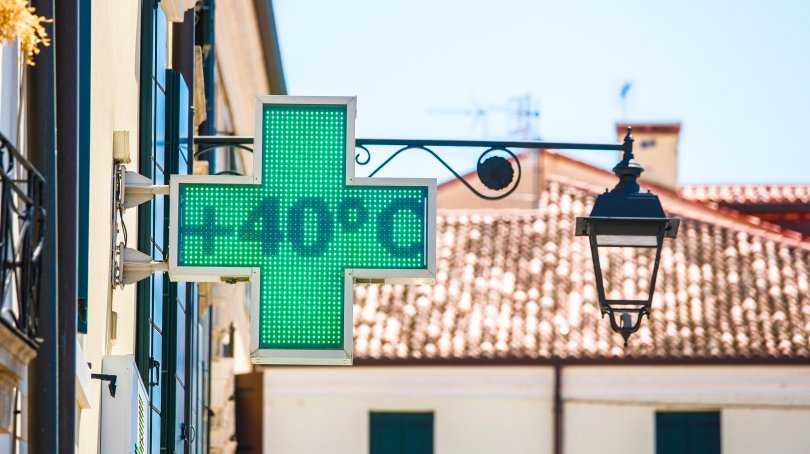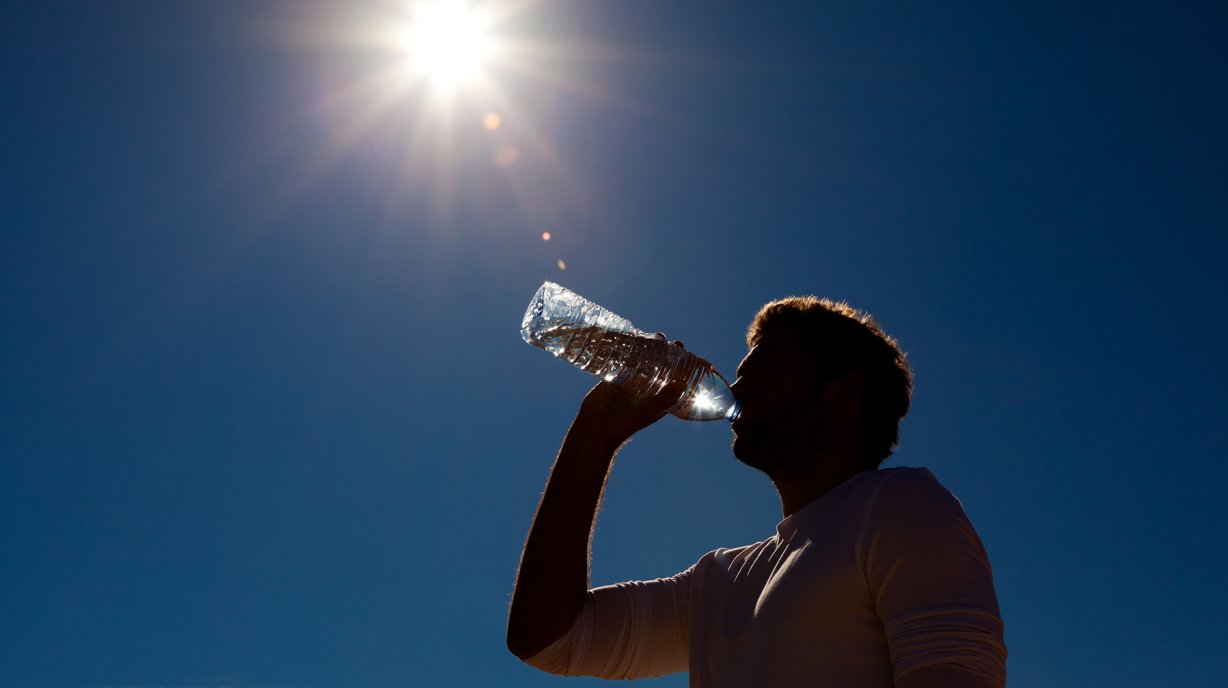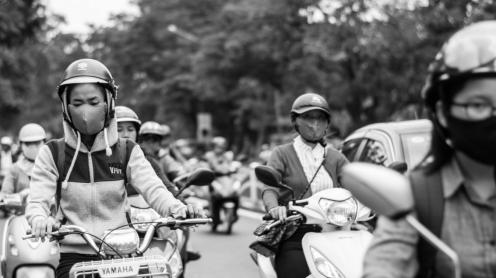Heatwaves are often overlooked in the analysis of extreme weather events, particularly in terms of their economic impact. This lack of research and the population's low perception of risk limit the adoption of adaptation measures, despite the fact that the health effects of heatwaves are largely avoidable.
In its latest climate report, published at the end of April 2023, the European Copernicus program points to an alarming rise in temperatures and an intensification of extreme events over the previous year. In 2022, Europe experienced its hottest summer on record, with a temperature rise of 1.4°C compared to the average for the years 1990 to 2020. Heatwaves, droughts and wildfires have become the norm in recent years, increasing fears for the future and the health of Europeans. Future summers could gradually resemble that of 2003. That year, an exceptional heat wave in terms of its scale, duration and extremes revealed the public authorities' lack of preparedness for such phenomena, and triggered the introduction of an early warning system - a life-saving measure for French people’s health, but also... the economy.
In their study, researchers Lucie Adélaïde, Olivier Chanel and Mathilde Pascal developed indicators and a methodology for assessing the overall economic impact of the health effects of heat waves in France between 1974 and 2020, highlighting the crucial importance of adaptive measures to protect both health and the economy.

Picture by Dmitry Vereschagin on Adobe Stock
Heat, a devastating threat
In France, Mathilde Pascal's 2010 analysis of critical health issues up to 2030 already highlighted exposure to high temperatures as the fastest-growing risk, with adverse effects on health even at moderate levels. During heatwaves, the human body is subjected to intense stress, and thermoregulatory mechanisms can reach their limits, particularly in those at greatest risk, such as the elderly, infants and workers exposed to heat. The result is an increase in mortality and in the need for medical consultations and care.
The effects of extreme heat are relatively new in Europe, but they represent a growing danger for people and their economy. Worldwide, between 1990 and 2018, 37% of heat-related deaths were attributable to climate-change-induced temperature increases1. In 2019, at least 345,000 people are believed to have died as a result of heat. The number of days during which physical activity becomes dangerous is increasing rapidly. In 2020, more than 295 billion working hours had thus been lost.
In the medium term, in scenarios with warming exceeding +2°C in global average temperature, heat could constitute a major risk for a large part of the population and drastically limit human activity in several areas of the world. In India, for example, during the prolonged heatwave that led to thousands of deaths in May 2015, government authorities and trade unions recommended that workers suspend their activities between 11 a.m. and 4 p.m. Such measures aim to prevent health risks, but they also demonstrate the negative impact of extreme temperatures on collective productivity, reinforcing inequalities in heat-exposed societies2.
- 1Vicedo-Cabrera A.M., et al. (2021) “The burden of heat-related mortality attributable to recent human-induced climate change”. Nature Climate Change, 11(6), Article 6.
- 2Hanna E. G., et al., (2015) ‟Limitations to Thermoregulation and Acclimatization Challenge Human Adaptation to Global Warming”, International Journal of Environmental Research and Public Health 12(7), 8034-8074 ; Watts N. et al (2021) “The 2020 report of The Lancet Countdown on health and climate change: responding to converging crises ” The Lancet 397(10269), 129-170.
A real blow to the economy
Economic assessments often overlook heatwaves, generally focusing on the direct impact on infrastructure (deformation of railways, cooling of nuclear power plants, etc.), on productivity at work or on insurable assets (crops and buildings). They pay little attention to the human impact, even though this is a major factor during events of this type, but more difficult to calculate. For example, the French Insurance Federation (Fédération Française de l'Assurance ) expects insurable impacts to double over the period 2020-2050 compared with 1989-2019 in a scenario forecasting +4°C warming by 2100, without including the health impacts associated with heat waves. In 2009, the Health Department (Direction Générale de la Santé -DGS) estimated the direct costs borne by the French health insurance system as a result of the 2003 heatwave at between -10 and +280 million euros3, without taking into account the impact on the population in terms of death and loss of well-being.
The study by epidemiologists Lucie Adélaïde and Mathilde Pascal and economist Olivier Chanel provides an overall economic estimate of the health effects of heatwaves in France between 1974 and 2020. The researchers began by identifying heatwaves between June and September, during which daytime and night-time temperatures exceeded departmental thresholds for at least three days. For data prior to 2003, when these thresholds were introduced, they relied retrospectively on temperature data from Météo-France. They then estimated the health and economic impacts of heatwaves, focusing on excess mortality, loss of well-being and increased use of healthcare.
- 3If we consider only the additional costs associated with urgent care for people aged 70 and over, the low hypothesis of -10 million corresponds to costs avoided per 6 months of life lost and a 10% increase in the cost of follow-up care. The high hypothesis of 280 million corresponds to costs avoided per 1 month of life lost and a 40% increase in the cost of follow-up care.
The excess mortality rate is estimated on the basis of annual assessments carried out by Public health France (Santé publique France). Its economic evaluation is based on the valuation of mortality at 3.17 million euros, the value currently recommended in France for public health purposes. For the entire 1974-2020 period, they put the total cost of excess mortality at 143 billion euros. The loss of well-being is understood in terms of the restriction of activity associated with extreme heat suffered by the populations of departments under red alert. Its economic cost has been established at €43 per day of restricted activity, leading to a valuation of the loss of well-being over the period at €13 billion, 93% of which is concentrated in the years 2003, 2019 and 2020 alone. Finally, the cost of healthcare use is based on the cost of excess emergency room visits, SOS Doctors (SOS Médecins) consultations and hospital admissions. This is calculated only for the period 2015 - 2019, due to the lack of data available prior to this date. What's more, it is restricted to events directly linked to heat (loss of consciousness, hyperthermia, isolated fever or dehydration), whereas the literature has highlighted numerous other health effects in terms of cardiorespiratory diseases, effects on health at work, mental health and perinatal health. This twofold underestimation explains why the use of healthcare represented only 31 million euros over the period, i.e. less than 1% of the total monetary evaluation. The aim of this global quantification, by making the health and economic risks associated with heat more visible, is to encourage the implementation of adaptation measures.
Yes, we can… adapt
Unlike other natural phenomena, such as earthquakes or landslides, heatwaves are predictable, meaning protection is possible. In the short term, at least one or two days in advance, warning and prevention measures can be put in place.
If measures, mainly behavioural, exist in France, they largely result from the lack of anticipation of the 2003 heatwave. The summer of 2003, often considered a meteorological anomaly, was the hottest in 73 years: 2.7°C above seasonal norms. The heat wave resulted in some 14,800 excess deaths between August 1 and August 20, a 60% increase on the expected mortality rate, particularly affecting people at risk. The health authorities were sharply criticized for their lack of responsiveness to the alert issued by emergency physicians, and in 2004 the National Heatwave Plan (PNC) was set up. Its aim is to prevent the risks associated with heat waves, by targeting vulnerable people and involving health and social care professionals. The heatwave and health alert system (Sacs) is used to anticipate risk situations, based on departmental alert thresholds defined on the basis of temperature analysis and past mortality. The Sacs health component monitors heat-related use of emergency services in real time, and provides mortality indicators. Ongoing adjustments are made to improve risk assessment, health surveillance and prevention communication. What's more, these prevention tools are proving inexpensive: the Sacs annual budget is around €454,000, after an initial investment of €287,000 in 2005.

Old man suffering from heat wiping his forehead
However, behavioral and warning measures alone are not enough. They need to be complemented by longer-term structural adaptation measures, aimed in particular at preparing cities for climate change. Admittedly, the summer of 2003 was out of the ordinary, but recent summers have tended to resemble it. In 2020, the country recorded an excess of deaths during heatwaves of around 2,000 people, and in 2022, almost 3,000. These structural investments, made as early as possible, would help to reduce healthcare costs over the longer term. At an international level, the Intergovernmental Panel on Climate Change (IPCC) is calling for accelerated action to reduce the impact of global warming.
At local level, initiatives are beginning to emerge. A fact-finding and assessment mission entitled Paris sous 50 degrés (Paris under 50 degrees) was conducted in 2023 and signed a report with recommendations for adapting the French capital to the heat waves it could experience by 2050. The city's current record temperature - 42.6°C under shelter - was set in 2019. The stakes are high in a city that is ill-suited to the task, with its density and mineral nature, prompting the report's author Maud Lelièvre, from the Modem, Démocrates et Ecologistes group, to say that it will be a question of implementing "a Haussmann revolution in reverse". The report recommends that urban planners take urgent measures to avoid total dependence on air conditioning, and suggests solutions such as creating green spaces, greening buildings and using appropriate cooling materials and techniques. It also suggests considering adjustments to the working day, such as naps and later evening event times, to avoid excessive exposure to heat. This necessary adaptation must not wait, especially as it is also a question of social justice. Extreme heat is a source of inequality, and the most vulnerable will be the first to suffer: more fragile, more exposed, poorer, older and less able to take measures to avoid it.














